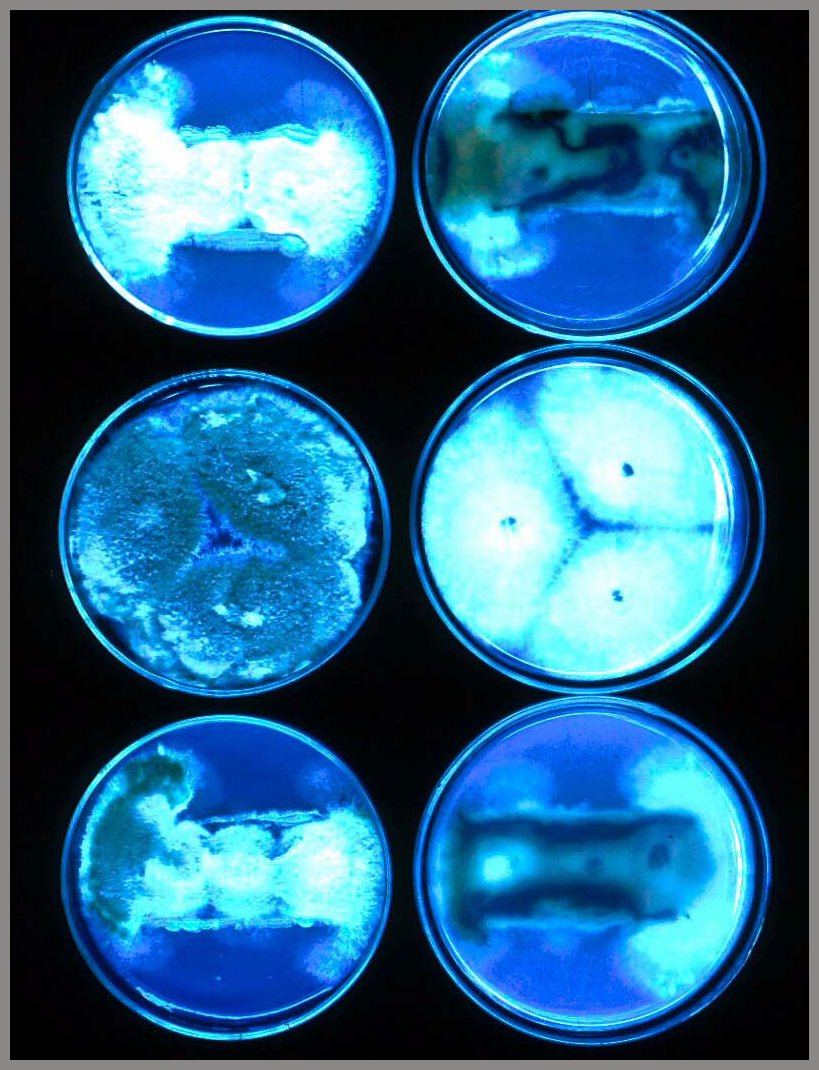 Bacteria - Microscopic
organisms that are single-celled, increase is by binary fission where
the mother cell divides to form two like daughter cells, or in some cases
by motile bodies called gonidia. Most bacteria are spherical or
rod-like, but some are curved or twisted, and some are filaments, as the
individual cells join to form long chains. Some forms have branching
of the filaments and they are called Actinomycetes. Many forms are
motile. The organism is contained by a membrane and the cell is
nucleated, but the nuclear apparatus is not constant, or often not well
defined. Bacteria may obtain their food from living or dead organic
materials and also obtain energy by the oxidation of different substances
such as compounds containing nitrogen, iron, and sulfur. Bacteria
can be found everywhere on and in earth where conditions are such that life
can be supported.
Bacteria - Microscopic
organisms that are single-celled, increase is by binary fission where
the mother cell divides to form two like daughter cells, or in some cases
by motile bodies called gonidia. Most bacteria are spherical or
rod-like, but some are curved or twisted, and some are filaments, as the
individual cells join to form long chains. Some forms have branching
of the filaments and they are called Actinomycetes. Many forms are
motile. The organism is contained by a membrane and the cell is
nucleated, but the nuclear apparatus is not constant, or often not well
defined. Bacteria may obtain their food from living or dead organic
materials and also obtain energy by the oxidation of different substances
such as compounds containing nitrogen, iron, and sulfur. Bacteria
can be found everywhere on and in earth where conditions are such that life
can be supported. More points on the topic: Bacteria have no membrane-bound nucleus. Bacteria are very small. They do big things. If a three micron long bacterium were enlarged to the size of a six-foot, tall person, and then the person was enlarged the same way, the person would be about 700 miles tall. Yes, bacteria are small. Bacteria often live in tunnels left behind as hyphae of soil fungi die. Amoebae are not able to attack the bacteria in the minute- diameter tunnels (SHIGO, 1999).
The fungi play a major role in recycling essential elements from dead organic matter. The fungi often do this in association with many other organisms in the soil: bacteria, insects, worms, amoebae, nematodes, and small animals. Many of the fungi associated with mycorrhizae have mushroom fruit bodies. Others have a variety of fruit bodies above ground and below ground. The major point is that the members of the natural system are all connected. When the connections begin to be broken, the system will suffer. You can kill soil. You can kill a forest. You can kill many living things that depend on a healthy forest. How? By breaking connections.